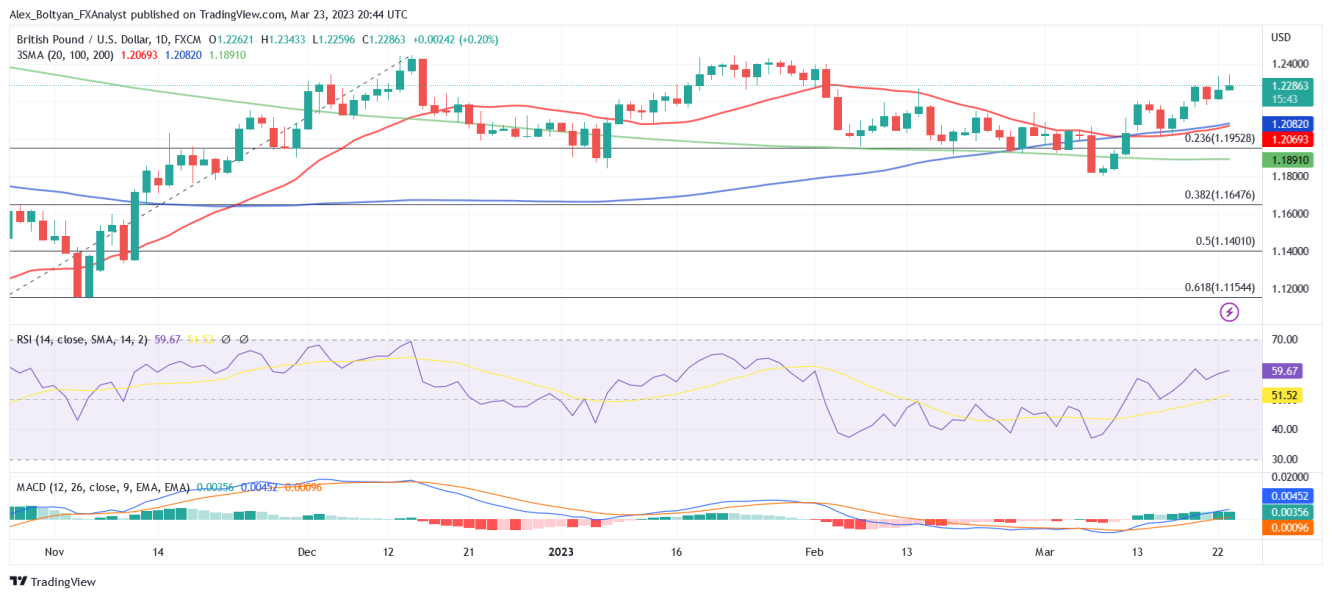The GBP/USD pair advanced for a second day in a row on Thursday, following the Bank of England's (BoE) decision to raise its main interest rate by 25 basis points to 4.25%. The BoE didn't rule out further hikes, which helped underpin the pound. However, the deterioration in the market sentiment during the New York session lifted the greenback and weighed on the pair, which retraced part of its intraday gains. At the time of writing, the Cable trades at the 1.2290 zone, up 0.21% from its opening price, having printed a three-week high of 1.2343 after the BoE announcement.
The Federal Reserve also delivered a 25 bps rate increase on Wednesday. Powell's comments and the dot plot led investors to anticipate just one more 25 bps hike in 2023, which put the dollar on the defensive. The Bank of England, like the Federal Reserve and the European Central Bank (ECB), has prioritized the fight against inflation, citing the robustness and resilience of the U.K. banking system. Furthermore, the BoE's economic forecast anticipates a significant drop in inflation in Q2 2023, with a slight increase in economic activity over the same period.
On Wednesday, the U.K.'s Office for National Statistics reported that the Consumer Price Index (CPI) had risen to 10.4% on a yearly basis in February, up from 10.1% in January and surpassing market expectations of 9.8%. The core CPI also increased from 5.8% to 6.2% over the same period, exceeding consensus estimates.
From a technical standpoint, the GBP/USD retains a bullish bias on the daily chart, with indicators in positive territory and the pair above its main moving averages.
On the upside, short-term resistances are seen at the 1.2300 psychological level, followed by March 23 high at 1.2343 and then the 1.2400 zone. On the other hand, support levels could be found at 1.2200, the weekly lows at around 1.2170 and the 1.2100 mark.


